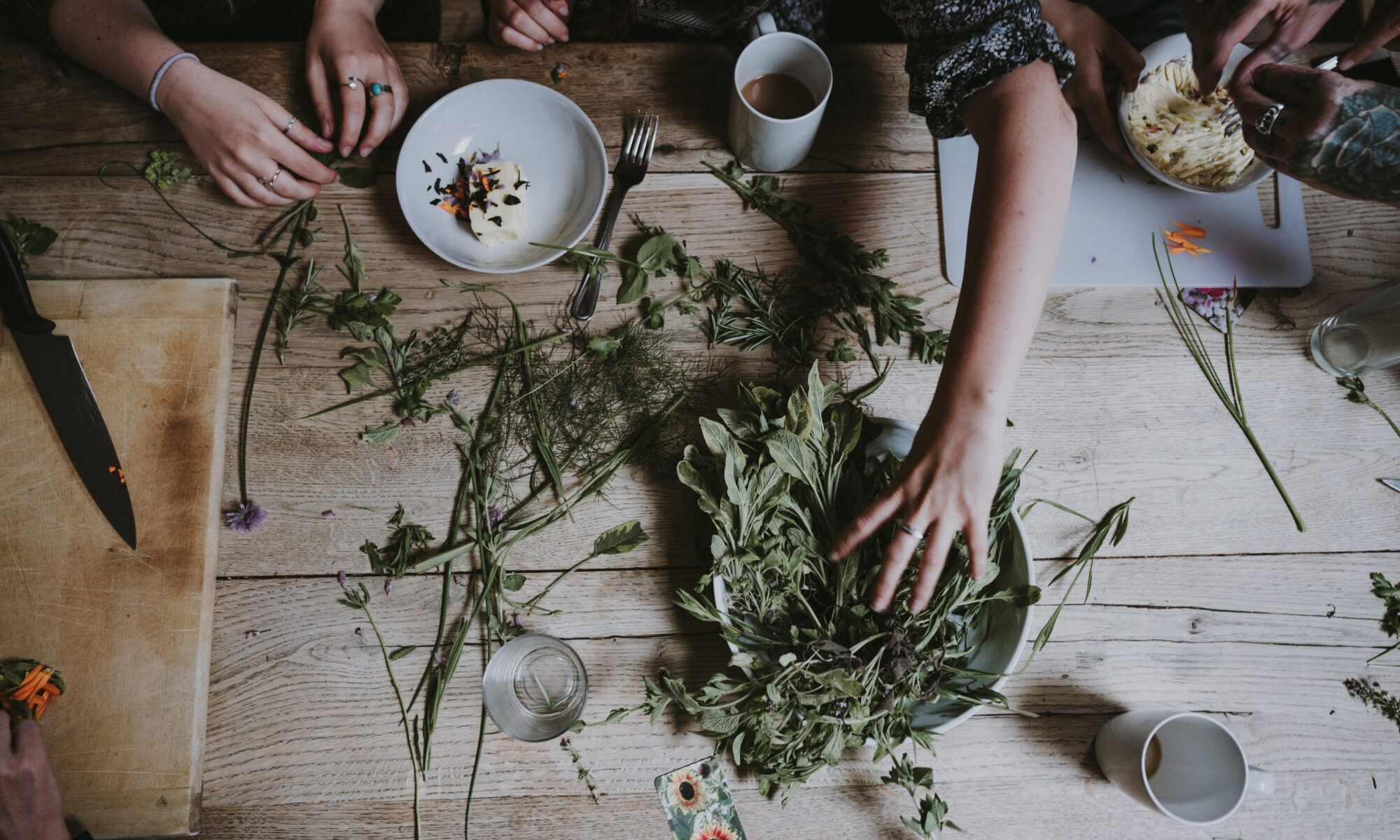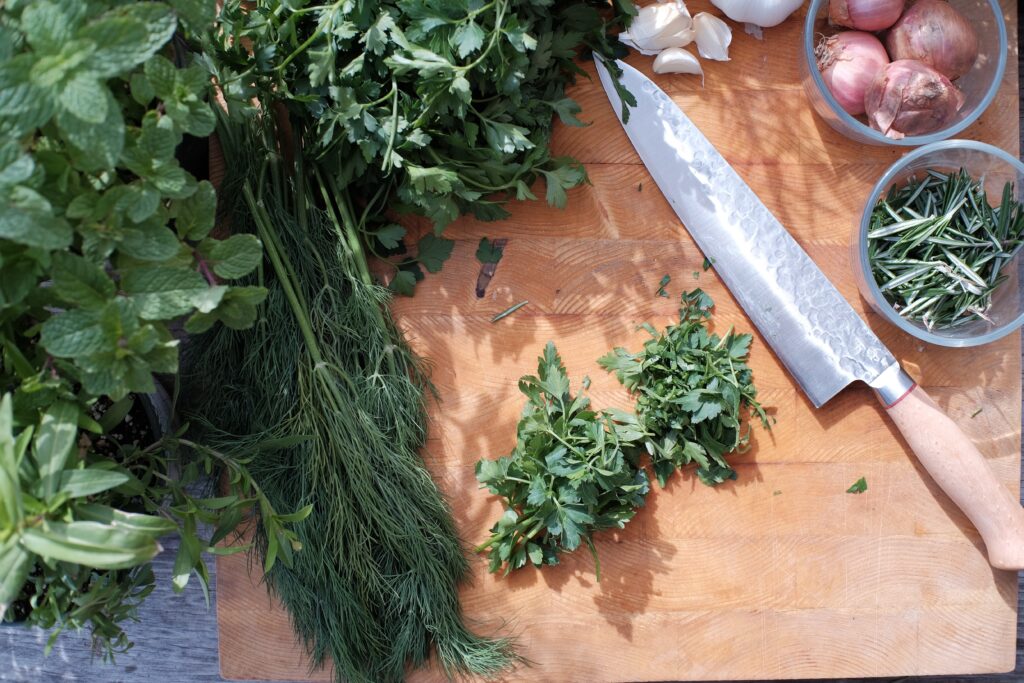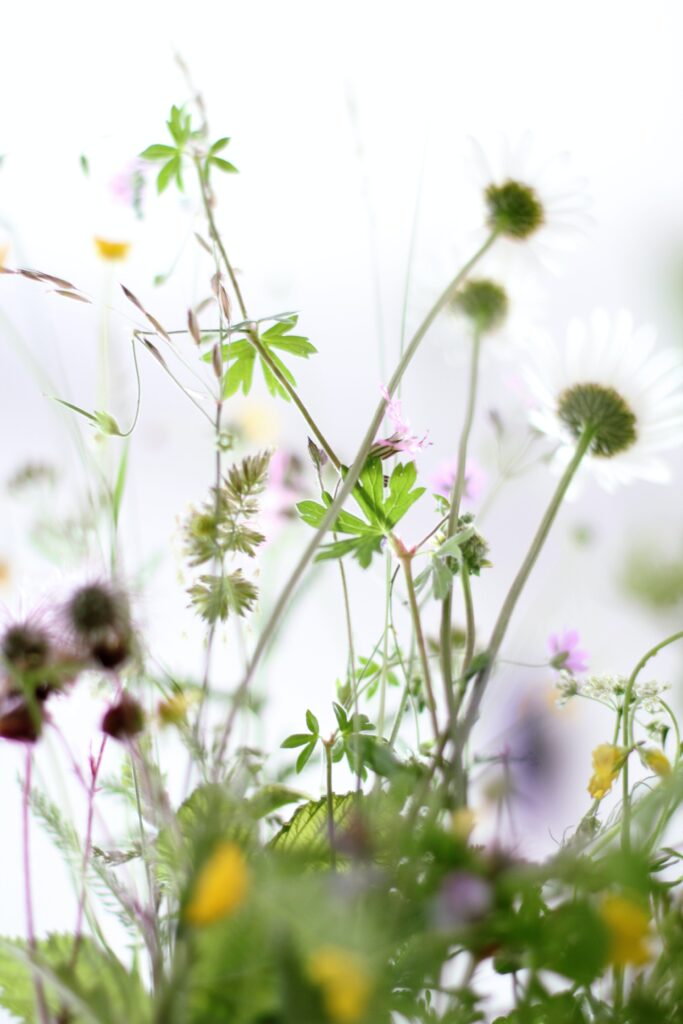What’s the difference between organic herbs and wild herbs?
Organic herbs are organically grown based on the regulations and certification requirements of the country where they are cultivated.
Some countries, like the United States and Europe, have strict requirements for herbs and other foods to be organic.
The USDA has a helpful website that explains in detail organic food label requirements.
Even if herbs are not labeled organic, if you know the farmers, you can ask about their practices and visit their farms to see for yourself. Often small-time farmers participate in regenerative agriculture and use organic farming techniques but do not have the money to get certified.
Issues With Organics
However, although the industry is regulated in the United States, some American farmers have gotten very rich by fraudulently selling food labeled organic when it isn’t.
Other countries, like Australia, allow the word “organic” to be used on labels even when the food isn’t organically grown.
So, if you’re buying organic herbs from Australia, be sure to look for the words “certified organic.
China is a country notorious for falsely labeling herbs and other products as organic, even when they’re not.
Wild or Wildcrafted Herbs
Wild herbs, on the other hand, come directly from nature. These are herbs that have grown in the wild.
Farmers do not cultivate them. Instead, they are “wildcrafted.” This means an herbalist or crafter has harvested the plants from their natural habitat.
Wild herbs are uncultivated.
They’ve grown and survived the elements and their habitat naturally, without any human intervention.
The Difference Between Organic Herbs and Wild Herbs: Which Herbs Are Better?
Most large herb companies that we are all familiar with either use organic herbs cultivated elsewhere or have their own farm and grow the herbs for their products.
The difference between organic herbs and wild herbs is important to understand. Organic nettles have been grown by human hands. While you might think these are the best nettles you can buy, they’re not.
Here’s why: most medicinal herbs that grow naturally in the wild undergo tremendous amounts of stress to not only survive but also thrive. And doing so, these wild herbs produce many of the secondary metabolites that make them even healthier for us to consume.
On the other hand, organic herbs grown in healthy, rich soil are not put under any stress at all. Therefore, they will be inferior to wild-crafted herbs.
The Miracle of Hormesis
Hormesis may not be a word familiar to you. It is defined as mild stress-induced stimulation of protective mechanisms in cells and organisms resulting in biologically beneficial effects. It has been recognized as compensation or overcompensation for mild environmental stress.[1],[2]
To read more on hormesis, I wrote a blog titled “Adaptogens, Bioregulatory Systems Medicine and Network Pharmacology” with a sub-text titled “Hormesis: The Key to Adaptation.”
What is Xenohormesis?
Xenohormesis might be the key to what makes herbal medicine so valuable to our health. The name stems from a combination of the prefix xeno-(for stranger) with hormesis (a protective response induced by mild stress). Many things in the environment can stress plants.
Plants have several challenges, which include:
1) engineering their own pollination and seed dispersal
2) finding food locally
3) defending themselves (they cannot get out of the way of incoming threats)
They have had to adapt and coexist with herbivores and pathogens in their immediate environment that otherwise could overcome and destroy them.
In response, the plants produce a variety of compounds to help them overcome environmental stressors. That process is called xenohormesis. Xenohormesis is a biological principle that refers to how environmentally stressed plants produce bioactive compounds.
These bioactive compounds, in turn, can confer stress resistance and survival benefits to the animals (including humans) that then consume them.[3] In other words, we benefit from all the stress the plant has taken on simply by consuming them.
Stressed Plants Produce Healthy Compounds
Well-known for their healing effects, polyphenols, such as resveratrol and quercetin, are produced by stressed plants.
While under stress, it has been observed that these polyphenols activate sirtuin enzymes which extend the lifespan of fungi and animals.
Sirtuin enzymes have been implicated in numerous biological pathways and as a result, are considered a promising target for treating human diseases.[4]
Over the past two decades, the scientific and wellness communities have come to understand the importance of hormesis and the adaptive stress response. Research in the science of stress has established that the ability of organisms to respond to physical, chemical, and social stressors is a fundamental process of life and specifically adaptation. Some believe that it is, perhaps, the most important aspect of health.[5],[6]
When answering the question, “What’s the difference between organic herbs and wild
herbs,” it becomes apparent that one of the main differences is that wild herbs contain a
a plethora of bioactive secondary compounds that increase their ability to survive and
contribute to the health of humans who consume them.[7]
Ethical and/or Sustainable – Wild Crafting is the Way to Go
Ethical wildcrafting involves gathering just the leaves, fruit, seeds, or branches from the plants. This ensures that plenty of the plant remains intact so that it can continue the supply. Or, when harvesting root medicine, it is important to only harvest when there is plenty, and you can reseed, so you don’t reduce the natural population of that specific plant species.
Some herbs, such as American ginseng, which doesn’t farm well at all, can be grown in the wild. This means you plant the seeds in areas where the plant already grows. This appears to be an effective means of providing good medicine without destroying the environment.
The American Botanical Council’s Sustainable Herbs Program provides tools and resources so that everyone purchasing herbal products can make the most of that buying power. It encourages more companies to invest in the practices needed to create high-quality, sustainably sourced botanical products.
Organically grown herbs are always better than conventionally grown herbs. Obvisously, you should avoid eating herbs that have been sprayed with chemicals. But herbs that grow in the wild are superior to both. When possible, forage for wild herbs or foods yourself. If that’s not realistic, you can usually buy some wild herbs from local herb crafters.
Some common herbs/foods to harvest yourself include nettles and watercress, and if you know someone that knows mushrooms, harvesting wild morels or porcini mushrooms can be a lot of fun, but don’t go without someone that really knows mushrooming.
Another option is for you to grow plants in their natural environment, allowing them to adapt to their various stressors without intervening too much. That way the plants and herbs you grow yourself will produce those important secondary compounds that are so beneficial to our health. You can then harvest them yourself and use them for medicine making.
Related articles:
Dandelions are Delicious and Nutritious, Here’s Why You Should Eat Them
What Plants Can Teach Us About Love

[1] Kouda K, Iki M. Beneficial effects of mild stress (hormetic effects): dietary restriction and health. J Physiol Anthropol. 2010;29(4):127-32. doi: 10.2114/jpa2.29.127. PMID: 20686325
[2] Rattan SI. Hormesis in aging. Ageing Res Rev. 2008 Jan;7(1):63-78. doi: 10.1016/j.arr.2007.03.002. Epub 2007 Aug 31. PMID: 17964227.
[3] Hooper PL, Hooper PL, Tytell M, Vígh L. Xenohormesis: health benefits from an eon of plant stress response evolution. Cell Stress Chaperones. 2010 Nov;15(6):761-70. doi: 10.1007/s12192-010-0206-x. Epub 2010 Jun 4. PMID: 20524162; PMCID: PMC3024065.
[4] https://sustainableherbsprogram.org/
[5] Feder ME, Hofmann GE (1999) Heat-shock proteins, molecular chaperones and the stress response: evolutionary and ecological physiology. Annu Rev Physiol 61:243–282
[6] Tytell M, Hooper PL (2001) Heat shock proteins: new keys to the development of cytoprotective therapies. Emerg Ther Targets 5:267–287
[7] Selmar D, Kleinwächter M. Stress enhances the synthesis of secondary plant products: the impact of stress-related over-reduction on the accumulation of natural products. Plant Cell Physiol. 2013 Jun;54(6):817-26. doi: 10.1093/pcp/pct054. Epub 2013 Apr 23. PMID: 23612932
https://www.resilience.org/stories/2014-08-11/using-plants-to-clean-contaminated-soil/[8] Kaller, Brian, Resilience, originally published by Restoring Mayberry, August 11, 2014, Using plants to clean contaminated soil, https://www.resilience.org/stories/2014-08-11/using-plants-to-clean-contaminated-soil/




